Plausible panda pop provides potent popsicle; pregnancy possible?

Giant panda Mei Ziang is unperturbed by public speculation about the possibility of a baby bump. (Photo by Connor Mallon/Smithsonian’s National Zoo)
It’s that glorious time of year: the birds are singing, the flowers are in bloom and panda watchers begin yet another round of “is she or isn’t she?” in the hope that the National Zoo’s giant panda Mei Xiang will become pregnant and produce a cub. Mei Xiang and Tian Tian, the National Zoo’s male giant panda, have produced two surviving cubs, Tai Shan, born in 2005 and Bao Bao, who will turn two this year. This spring, however, the Zoo may be diving a little deeper into the giant panda gene pool in hopes of a cub.
Caitlin Burrell, research scientist at the Smithsonian Conservation Biology Institute, returned from China earlier this week with frozen giant panda semen that had been stored at the Bifengxia Giant Panda Base’s cryopreservation bank. The sperm may be used for an artificial insemination of Mei Xiang when she goes into estrus this spring. This is the first time frozen semen has been transported from China to the National Zoo for breeding.
The semen sample was collected from a nine-year-old panda named Hui Hui who lives at the China Research and Conservation Center for the Giant Panda in Wolong in Sichuan Province, China. A cub sired by Hui Hui, who has not yet sired a cub, would be more genetically valuable than one sired by Tian Tian.
Giant pandas and other endangered species living under human care are not left to their own devices when it comes to doing what may or may not come naturally. Each year SCBI scientist Jon Ballou calculates the best genetic matches for all of the eligible breeding pandas around the world using a formula he originally developed in the 1990s for golden lion tamarins. It is now used to make breeding recommendations for all species managed by Species Survival Plans in human care. Scientists are working to preserve 90 percent of the genetic diversity of the giant pandas living in human care for the next 200 years. There are currently 392 giant pandas living in human care; scientists hope to grow the population to 500 bears.
Each spring Mei Xiang’s every move and mood is subject to the scrutiny of very public panda pregnancy watch. This year, the scrutiny has already begun as the Zoo documents the journey of Hui Hui’s frozen sperm on its @SmithsonianZoo Instagram account using #InstaScience and #PandaStory. Fortunately, giant pandas are easily embarrassed.
Posted: 23 April 2015

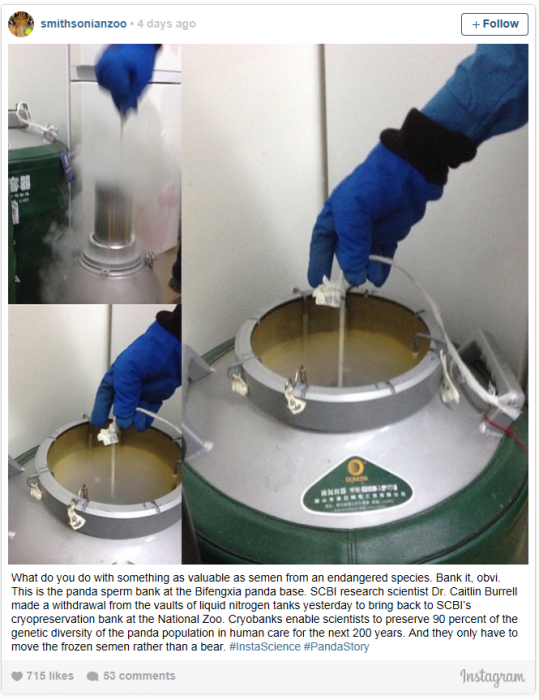
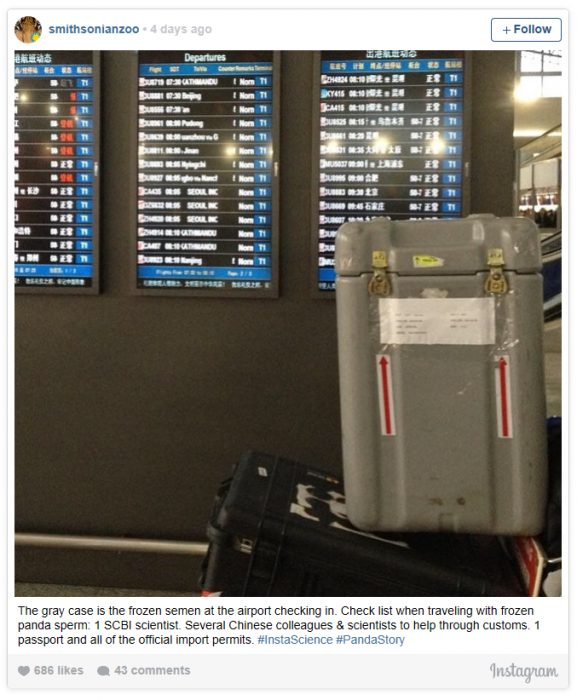
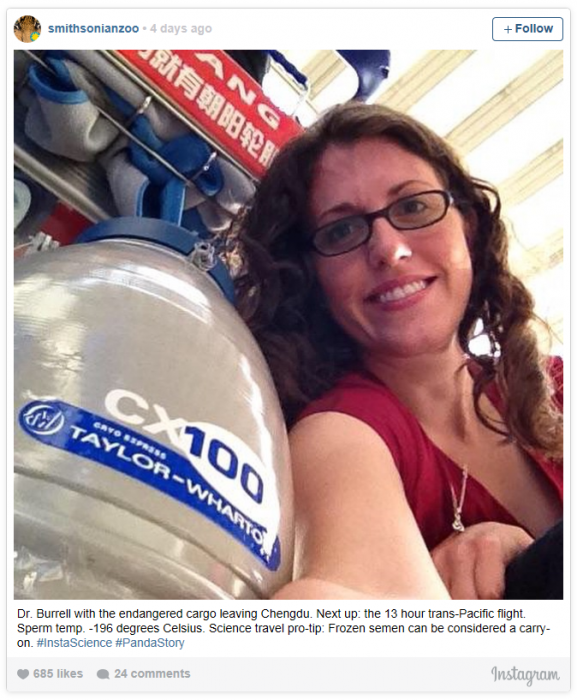
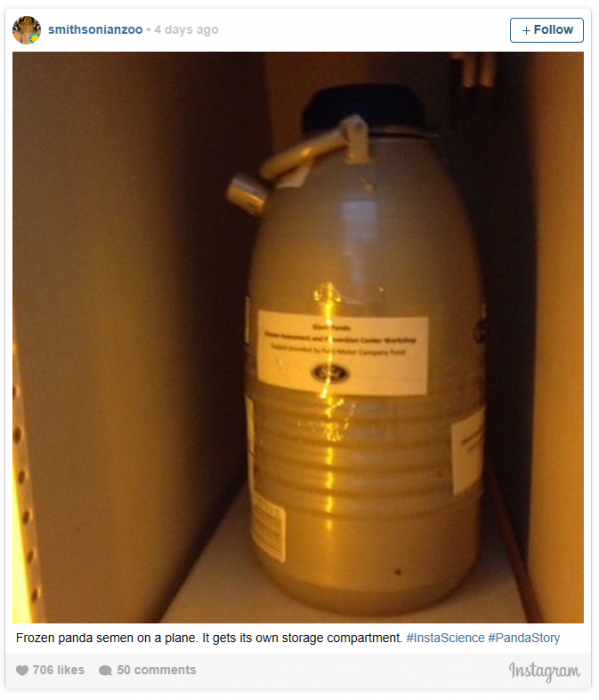


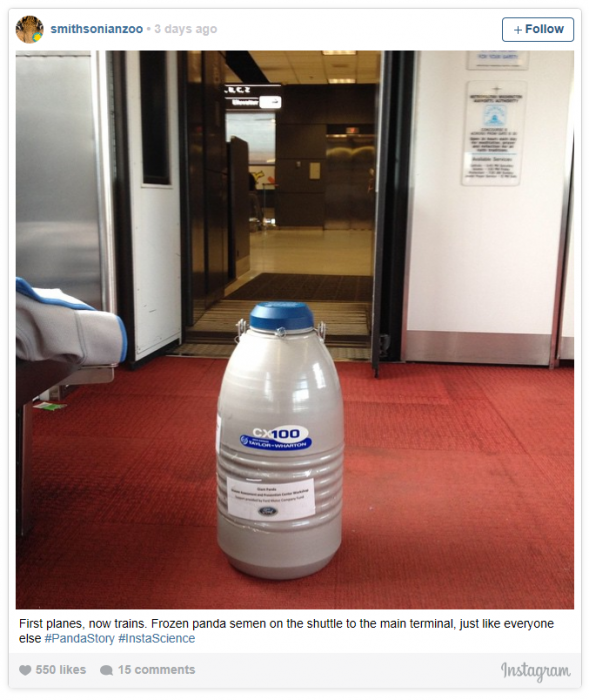
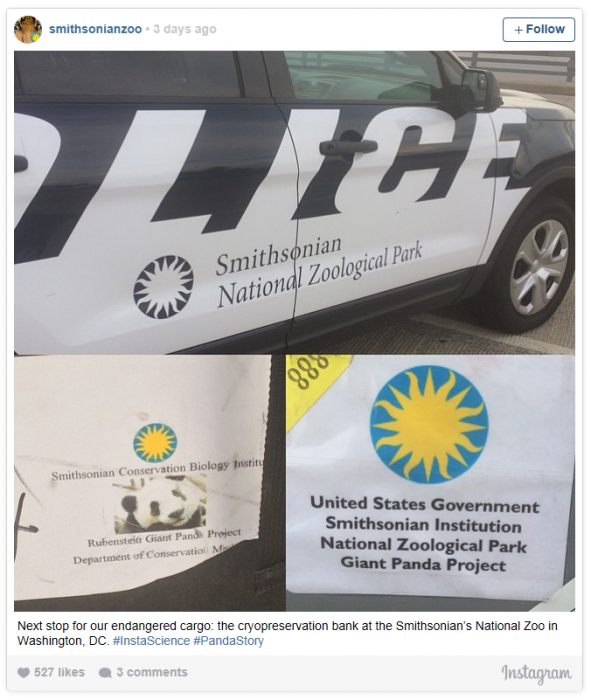


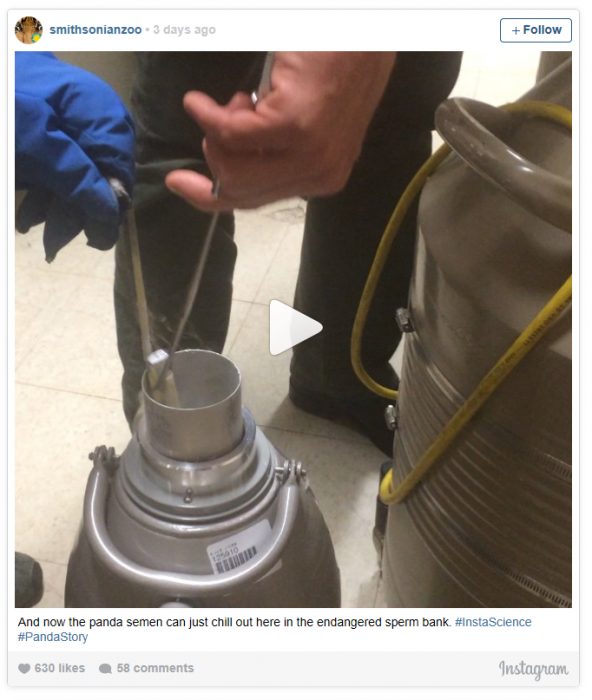





[…] from the National Zoo and Smithsonian Conservation Biology Institute artificially inseminated giant panda Mei Xiang starting April […]